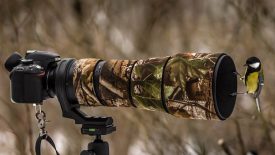The Recording Mode Dial on my Panasonic DMC-FZ1000 4K
Part 1
There are 2 Mode Dials on my Panasonic DMC-FZ 1000 4K camera. The Recording Mode Dial and the Drive Mode Dial. In Part 1, I will be describing the purpose and functions on the Recording Mode Dial.
The Recording Mode Dial
If you are new to Digital Photography, do not let all these technical terms confuse you. I will break them down individually, into their separate components, and this will begin to make more sense to you.
Selecting the Recording Mode is accomplished, by slowly rotating the recording mode dial clockwise or counter-clockwise, to the desired setting.
The TEN Settings of the Recording Mode Dial
- Intelligent Auto Mode … In this setting, the subjects are recorded using settings automatically selected by the camera.
- Intelligent Auto Plus Mode … This allows you to adjust the brightness and color hue when in Intelligent Auto Mode.
- Program AE Mode … This mode records at the aperture value and shutter speed set by the camera.
- Aperture-Priority AE Mode … The shutter speed is automatically determined by the aperture value you set.
- Shutter-Priority AE Mode … The aperture value is automatically determined by the shutter speed you set.
- Manual Exposure Mode … The exposure is adjusted by the aperture value and the shutter speed, which are manually adjusted.
- Creative Video Mode … Records a motion picture with the aperture value and shutter speed you specify. In this recording mode, all the motion picture functions become available. For example, you can record motion pictures in 4K, but you cannot take still pictures.
- C1C2 Custom Mode … Use this mode to take pictures with previously registered settings.
- Scene Guide Mode … This mode allows you to take pictures that match the scene being recorded.
- Creative Control Mode … Record while checking the image effect.
The Recording Mode Dial
The Recording Mode Dial is the beginning of your understanding the many functions and possibilities of your new camera.
This is a very technically capable tool that becomes easier to understand and appreciate with time and patience.
Practice/, and taking LOTS of photographs, will get you better results.
4 Tips for Taking Better Pictures
- Hold the camera gently with both hands, keep your arms still at your side and stand with your feet slightly apart.
- Do not cover the flash, the AF Assist lamp, the microphone or the speaker with your fingers or other objects.
- Be careful not to move the camera when you press the shutter button.
- Do not hold the lens barrel as you take pictures. There is a risk that your finger will be trapped as the lens retracts.
In Conclusion
All Panasonic Cameras come with complete and easy to understand manuals.
As with anything, practice and patience will always deliver better results.
For a look at the many photos I take with this excellent Bridge Camera, please visit my collection, ” My Panasonic DMC-FZ1000 4K “,
@ https://www.google.com/+PaulBoudreau14
Your comments and suggestions are always welcomed and I hope that time and practice will enable me to bring many interesting photos to this collection for your enjoyment and viewing pleasure.


I’m always interested in reading the information this kind of site has to offer.
I love photography but unfortunately I am not a natural photographer and have to work hard at getting a really good picture.
These tips and tricks from articles like this are a boon and every time I read one, I learn something new. This post also has a couple of tips in it for me to take onboard, thanks a lot.
What a lovely picture to head your article. Ches
Thank you Ches for visiting my website .
The 2 most important ways of improving at anything in life , are study and practice . I also learn a lot from visiting websites , reading books and of course – practice .
You are on the right path … continue your studies and take lots of pictures .
World famous photographers are happy to capture 1 superb photo per month … that is after taking thousands of photos … so there is still hope for us !
Do not be discouraged and you will do well .
Hope to hear from you again , real soon …
Paul Boudreau